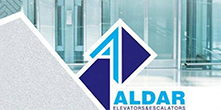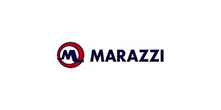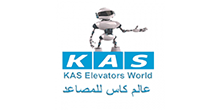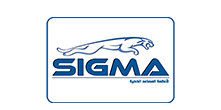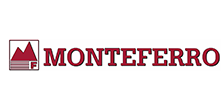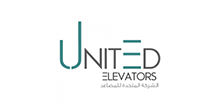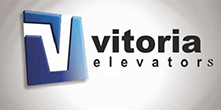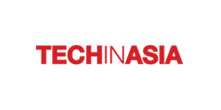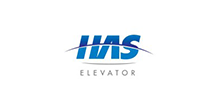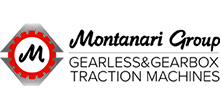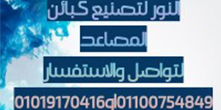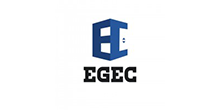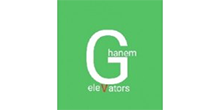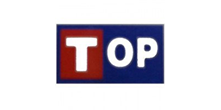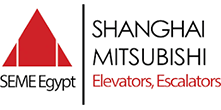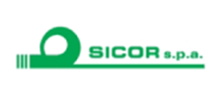elevator Internal Requests
Unit (Botnira)
With
the development of technology and the continuous development of the elevator
industry, companies and building owners must look for an innovative and
sustainable solution to ensure the safety of users and the efficiency of their
transportation. The Potnera unit is one of these technological solutions that
enable buildings to take advantage of the latest technologies to ensure the
optimal elevator ride experience.
Definition of the internal
elevator requests unit (Botnira).)
The Elevator Internal Request Unit (Botnera),
also known as “Botnera”, is an advanced technology used in elevator systems to
improve the elevator ride experience and increase its efficiency. Potnera is
considered one of the modern innovations in the elevator industry and is widely
used in modern and sustainable buildings.
Depends The internal elevator requests unit
(Botnerah) contains a set of sensors and advanced technology to enable users to
direct their requests easily and efficiently when using the elevator. When a
person stands in front of the elevator and wants to use it, the Botner unit
uses motion recognition and sensor technologies to detect the person’s presence
and direct the elevator to him without having to press traditional request buttons..
The importance of the internal
elevator requests unit (Botnira).)
Requests module Internal Elevator (botnirah)
holds great importance in the elevator industry and in improving the elevator
riding experience for users:
· Increase
efficiency and save time: Botner reduces waiting time for users and increases
the efficiency of elevator calls. People can simply stand in front of the
elevator without having to press order buttons, making the process faster and
easier.
· Users'
comfort: By using Putnirah, users can avoid long and annoying waiting in public
places, and this increases their comfort and happiness..
· Increased
safety: Thanks to the motion recognition and sensing technologies used in
Botnirah, elevator accidents can be avoided and user safety is ensured.
· Improving
the experience for people with disabilities: Botner makes elevator rides more
accessible for people with disabilities who may find it difficult to reach
traditional order buttons..
· Building
sustainability: Reducing waiting time for elevators reduces energy consumption,
which makes buildings more sustainable and contributes to reducing the
environmental footprint..
· Technology
update: Botnera contributes to updating elevator technology and making
buildings look more modern and attractive to tenants and visitors..
· More
customizable options: Botner can be configured to precisely fit building needs
and user requirements, making it a flexible and customizable solution.
Overall, the Botner unit enhances the overall
elevator riding experience and contributes to improving the safety and
performance of elevators, making it an important solution in the field of
infrastructure and modern buildings..
in order toFHow to create an
internal elevator requests unit (Botnira).)
Elevator Internal Requests Unit (Botnira) It
relies on advanced technology to achieve maximum efficiency and comfort for
users.
· Motion
sensing and recognition: The botnir unit usually contains a group of sensors
such as cameras and motion sensors.
· These
sensors monitor and track movement in the elevator call area.
· Analysis
and processingThe internal elevator requests unit (Botnerah) analyzes the data
collected by the sensors, and it recognizes the presence of people and their
locations.
· Activate
the elevator: When the system detects the presence of a person who wants to use
the elevator, it activates the elevator and directs him to the floor that the
user needs.
· Optimal
orientation and navigationThe Botner unit improves the optimal routing and
navigation of elevators to ensure that users reach their destination in the
shortest possible time.
· Ease
of useThanks to this advanced technology, users can just stand in front of the
elevator and enter without having to press traditional order buttons.
· SafetyThe
Botner unit increases the safety of the elevator ride by avoiding unexpected
closing incidents and ensuring that the elevator does not close quickly for
users.
· Customizable
technology: The Potnera unit can be configured and programmed to suit the
specific needs of the building or users, making it compatible with different
requirements.
In this way, the Botner unit improves the
elevator riding experience through advanced motion recognition, sensing and
analysis technologies, thus making elevator use more comfortable, easier and
safer for users..
ingredients Internal elevator
requests unit (botnira).)
Elevator Internal Requests Unit (Botnira) It
usually consists of several components that work together to achieve specified
goals. A list of some of the basic components that make up a potner unit:
· Motion
sensors and facial recognition: These sensors rely on sensor technology to
monitor people's movement and recognize their faces. They can include cameras
and motion sensors.
· CPU(CPU):
The central processing unit is responsible for processing data and information
collected from sensors and making decisions based on this data.
· Control
and Programming Module: The Control and Programming Module allows the Botner
unit settings to be adjusted and customized to suit the specific needs of the
building or users. It also allows updating the software and making necessary
modifications.
· User
Interface: Sometimes, a user interface is included for users to view
information related to the unit or to perform certain actions such as selecting
a desired destination..
· Elevator
interface: The butner unit is connected to the elevator system and its
interface to control the directing of the elevator to the desired destination..
· Intelligent
software and systems: The Boutinirah unit relies on advanced software that allows
data analysis and providing accurate elevator instructions.
· Power
Source: There must be sustainable power sources to operate the Potnera unit.
They may rely on electrical power sources or rechargeable batteries.
· Communications
and Networking: Some Botner models connect to the Internet or an internal local
area network to communicate with security and monitoring systems and update
software remotely..
These are the basic components that make up the
elevator internal requests unit (Botnera). These components work in integrated
coordination to improve the elevator riding experience and achieve the highest
levels of efficiency and safety.
Benefits of the internal requests
unit: Elevator (Botnira).)
The Internal Elevator Requests Unit (BUTNIRA) provides
many important and noticeable benefits to users and building owners alike.
· Improving
elevator efficiency: Thanks to Botnirah, the elevator riding experience is
improved by reducing waiting time and increasing response speed. This reduces ride
time and makes it an efficient way to move around within the building.
· Increased
comfort and luxury: Users can stand in front of the elevators without having to
wait long, which increases their comfort and provides them with a more
comfortable riding experience..
· Save
time: Botnira reduces the time spent waiting for elevators, which increases
users' productivity and saves them valuable time.
· Increased
safety: Motion recognition technology prevents unexpected locking of elevators,
making riding safer.
· Ease
of use: Elevator internal requests unit (botnira) They make riding elevators
much easier, which makes them useful for all ages and for those who may find it
difficult to use traditional devices.
· Sustainable
technology: Thanks to improving the efficiency of elevator calls, Botnerah
reduces energy consumption and reduces the environmental footprint of
buildings.
· Improving
the overall experience of the building: The Potnera unit contributes to
improving the experience of the building as a whole and makes it more
attractive to tenants and visitors.
· Technology
modernization: Renovating the elevator potnera helps modernize the building's
technology and make it more compatible with the modern era.
In general, the Internal Requests Unit (Elevator
Botner) helps In improving the elevator riding experience and making it more
comfortable, safe and efficient, making it an important investment for modern
and sustainable buildings..
Sensor technology in the internal
elevator requests unit (Botnera).)
Sensor technology in The Elevator Internal
Requests Unit (BUTNIRA) plays a crucial role in achieving outstanding
performance and increasing user safety. These are some of the common sensor
technologies that are used in Botnerah:
· Motion
sensors(Motion Sensors): These sensors monitor movement in the elevator call
areas. These sensors are usually installed in the walls or at the top of the
elevators and are used to detect the presence of people in front of the
elevators.
· Proximity
sensors(Proximity Sensors): Proximity sensors are used to detect the presence
of people when they approach elevators. These sensors work by sensing changes
in the electromagnetic field or sound waves.
· Light
sensors(Light Sensors): These sensors are used to determine the lighting level
in the elevator call area. This information can be used to improve the user
experience by adjusting the brightness of the lighting.
· Face
recognition sensors(Facial Recognition Sensors): Facial recognition technology
is used to identify users and ensure that the requested person is the person
who will be greeted when the elevator is called.
· Sound
sensors(Audio Sensors): These sensors are used to sense sounds and voice commands.
Users can use voice commands to call the elevator.
· Object
recognition sensors(Object Recognition Sensors): Object recognition sensors
help detect objects in the elevator space and ensure ride safety.
The actual units depend on the internal requests
unit (elevator unit) It relies on a combination of these sensor technologies to
deliver the best performance and experience to users. Thanks to this
technology, the Botner unit can recognize the presence of users and their needs
and direct the elevator efficiently and quickly to the desired destination,
which increases the comfort and safety of riding the elevator..
Future improvements to the
elevator internal requests unit (Botnira)
Development of the technology of the internal
requests unit, the elevator (botnira) Continuously achieving future
improvements aimed at enhancing its efficiency and increasing its usefulness.
Some expected future improvements to the Butnera module:
· Integration
with artificial intelligence(AI) and Machine Learning: The Botnerah module is
expected to be enhanced using machine learning and artificial intelligence to
increase its ability to recognize people and orders more accurately. This will
allow for a better and smoother user experience.
· Improvements
in communication and communication: It is possible to improve communication
methods with the Botner unit, so that users can use smart applications or
interact with voice to request elevators and send instructions..
· Natural
Language Recognition Technology: Improved natural language recognition
technology will allow users to interact with the Botner unit using voice
commands in a natural way and in a language they understand..
· Increased
face recognition accuracy: The technology used in face recognition can be
improved to become more accurate and faster, which increases the speed of
identifying users and increases security..
· Security
and Privacy Improvements: Improvements will continue to be made in the design
of the Botner module to increase security and privacy, while offering users
more options to control their personal information..
· Expanded
device and housing compatibility: Future improvements to the Butner module will
allow for broader compatibility with multiple types of elevators and buildings,
increasing their usability and simplifying integration..
· Environmental
Technology and Sustainability: Elevator Internal Requests Unit (Botnira)
technology can be improved To provide more options for using renewable energy
sources and reducing energy consumption.
· Providing
additional services: The Potnera Unit can provide additional services such as
providing information about the building or news while waiting for the elevator


